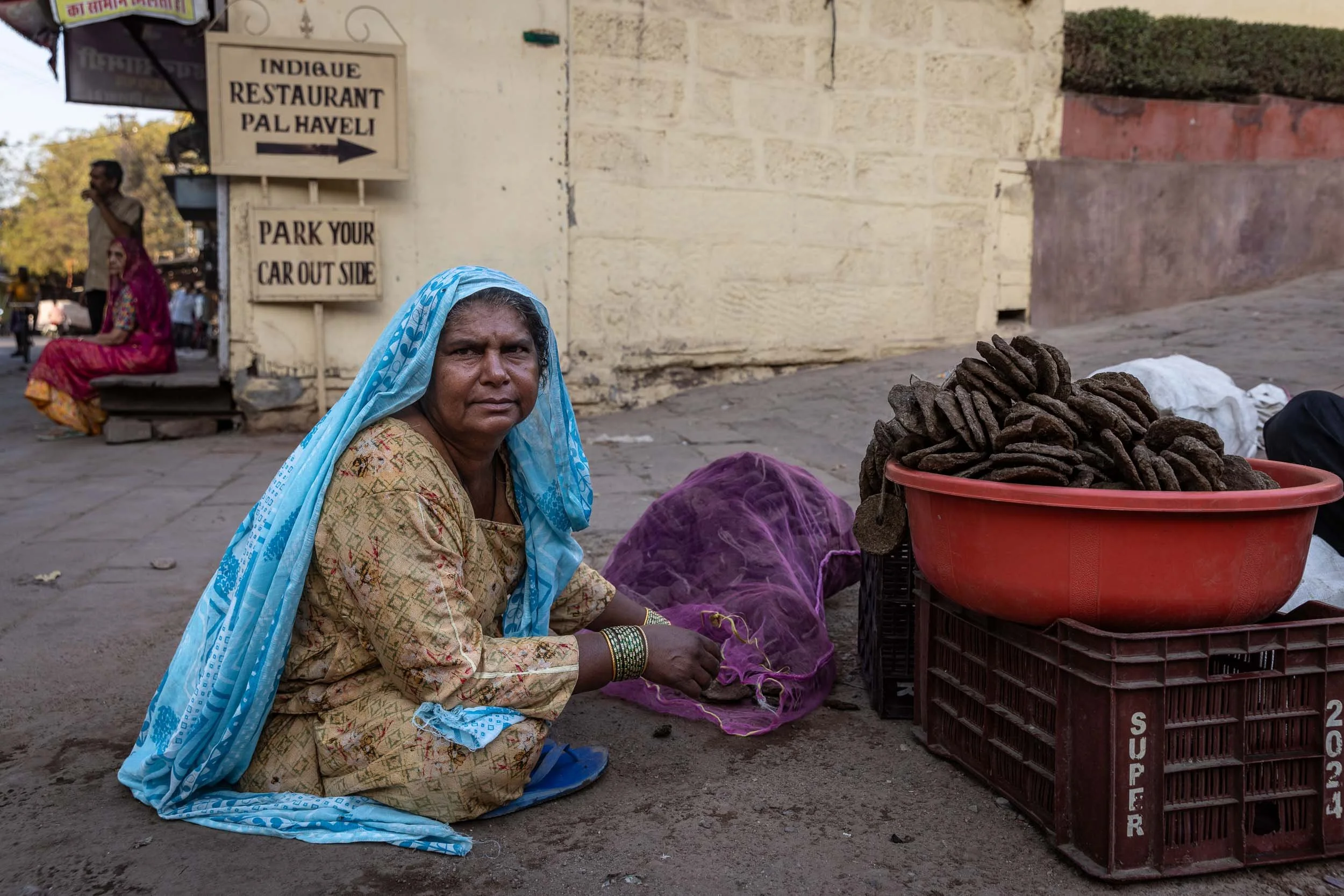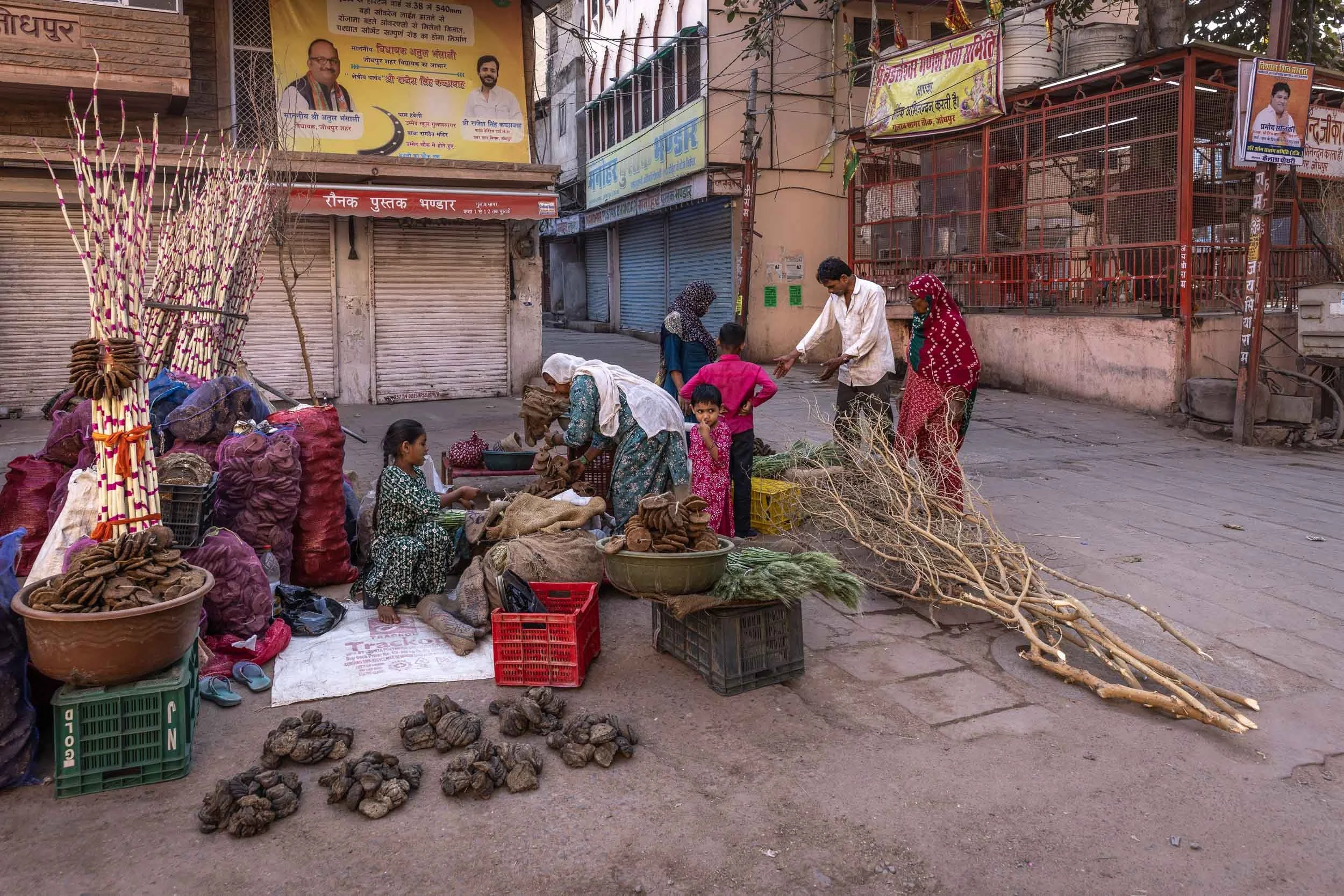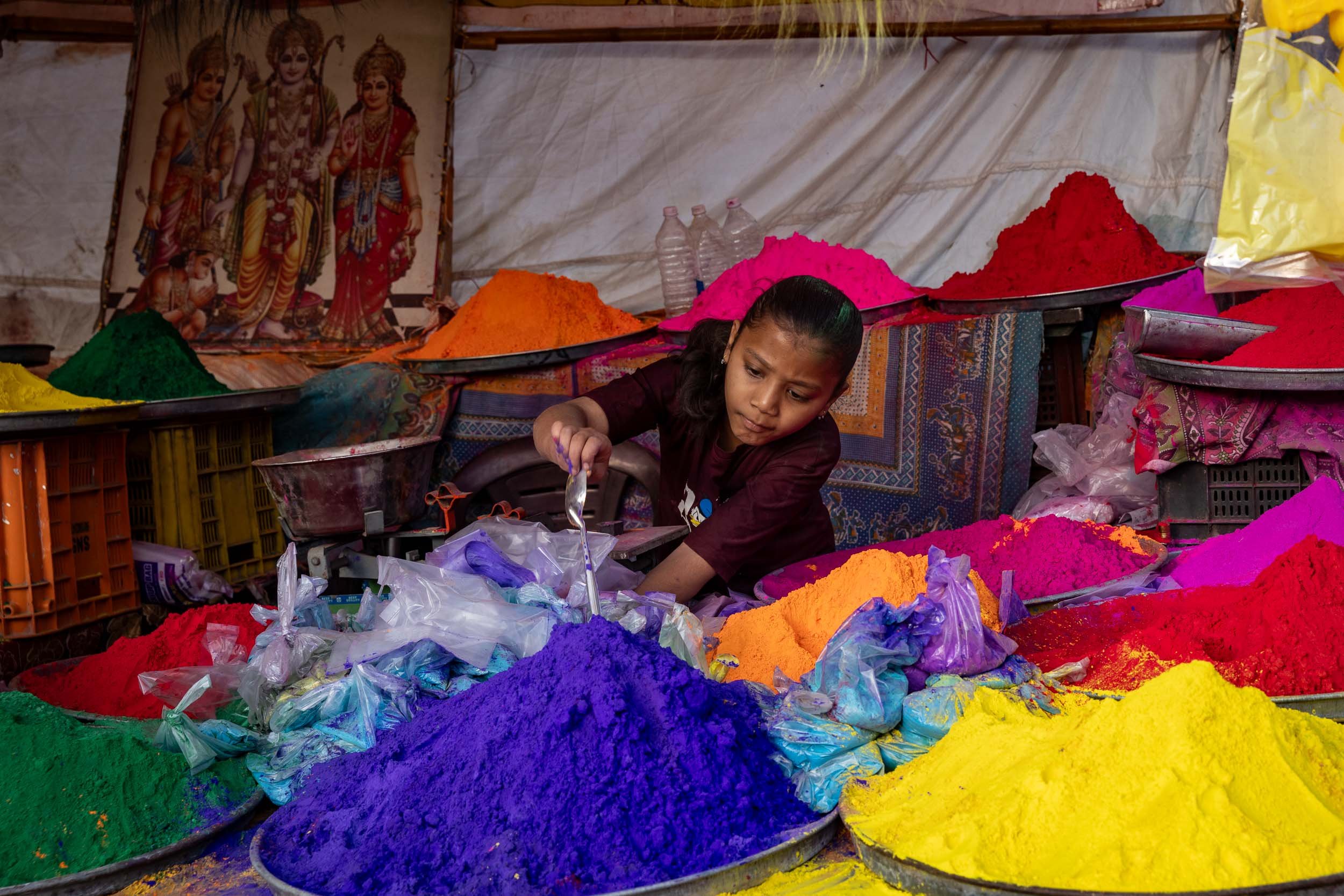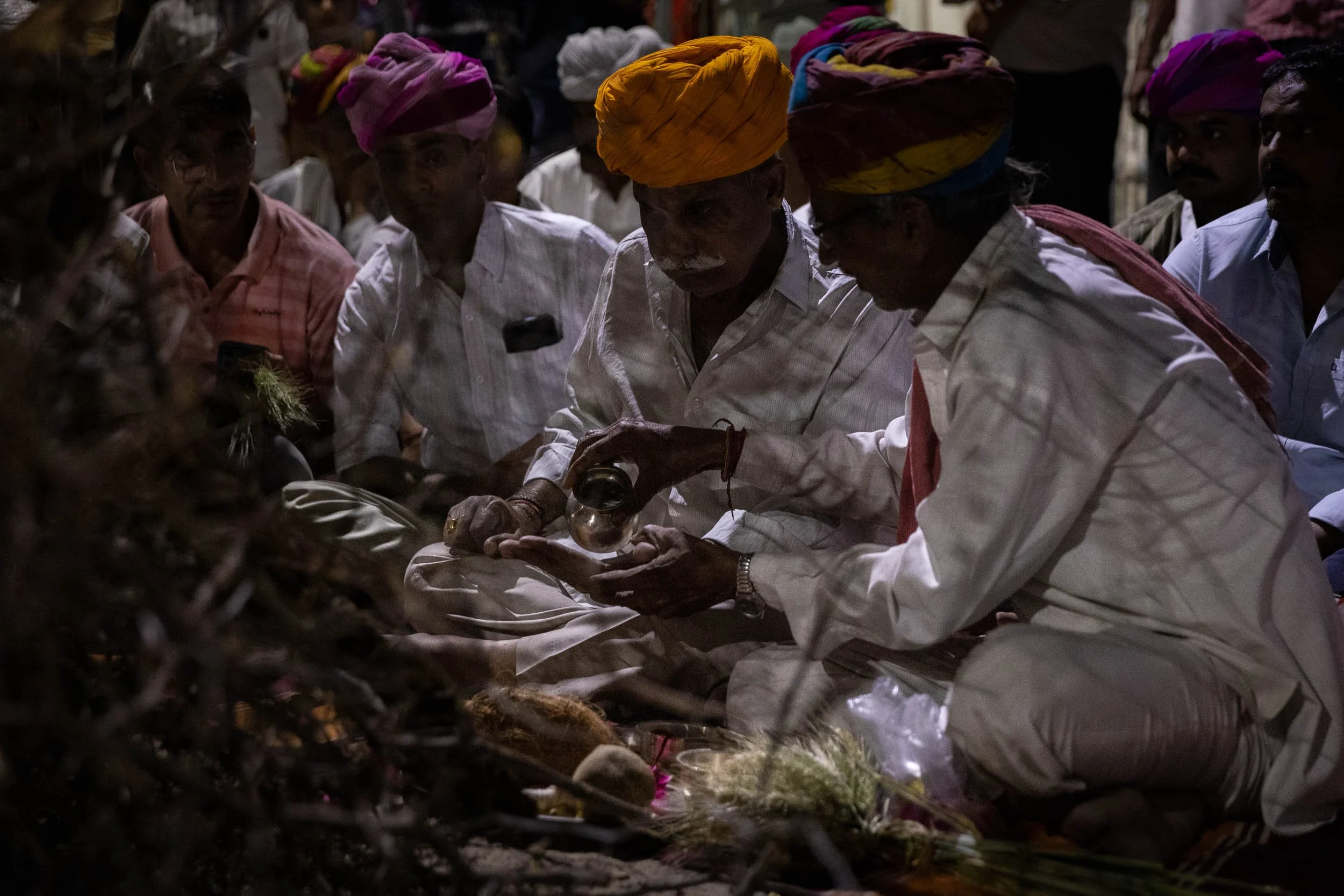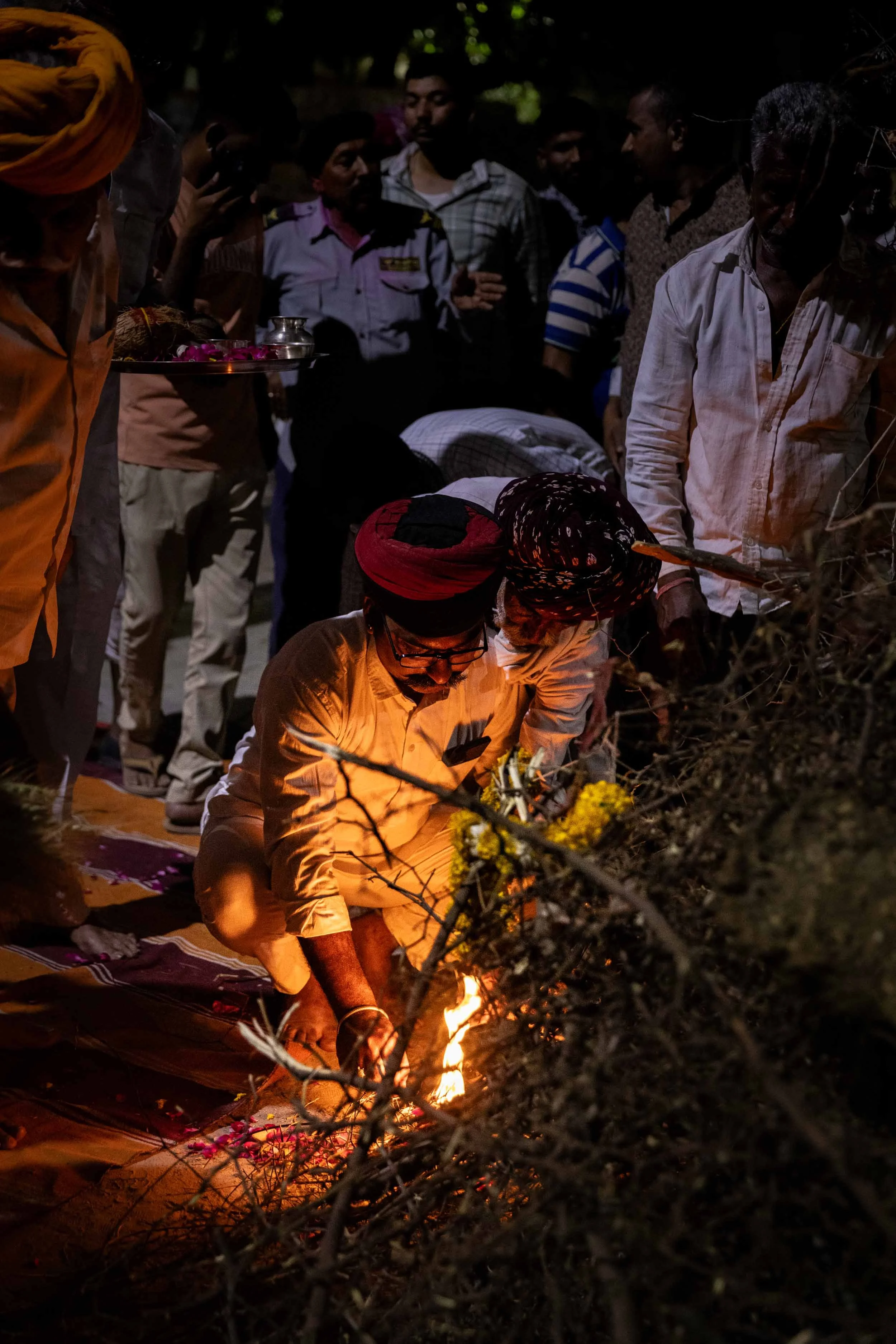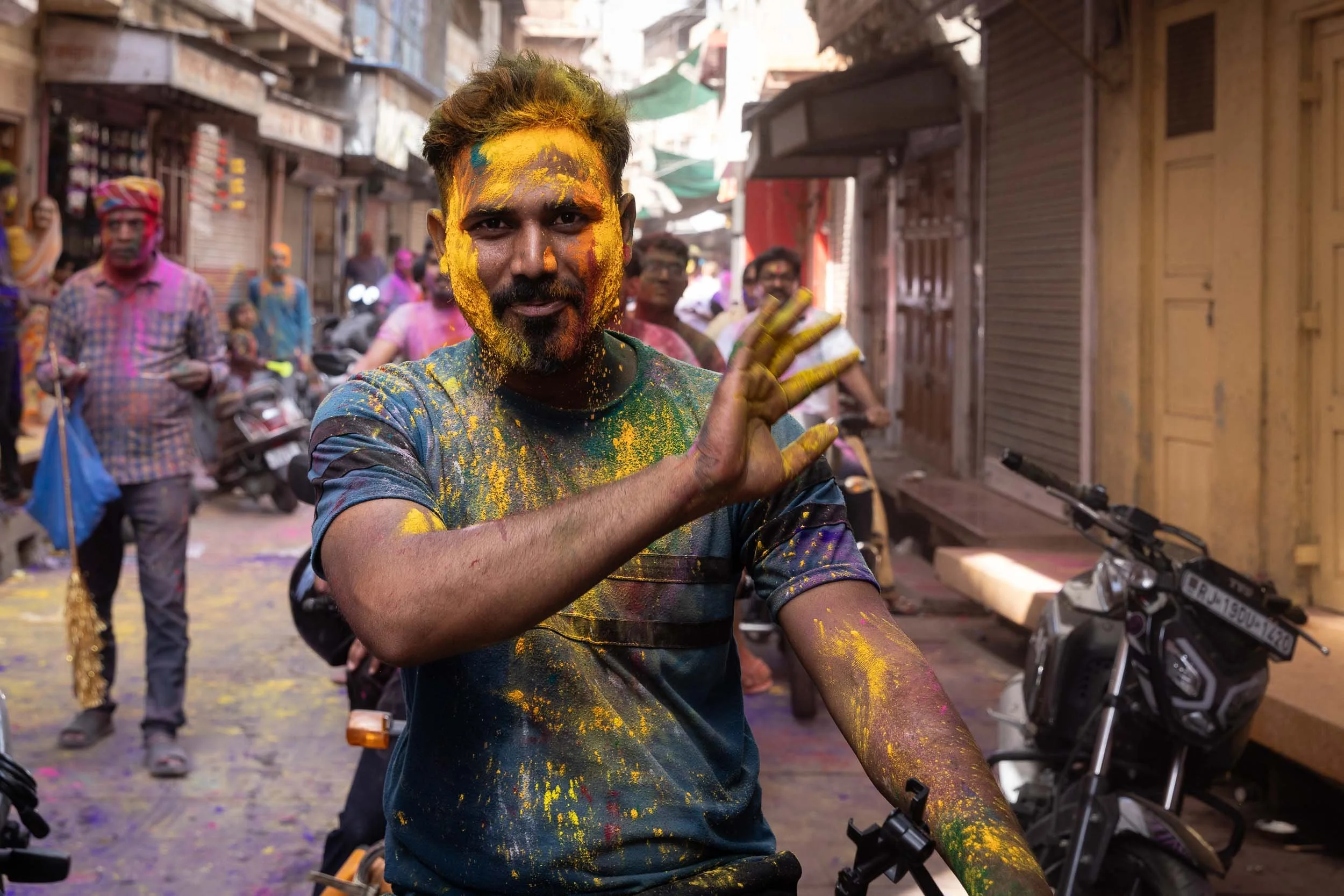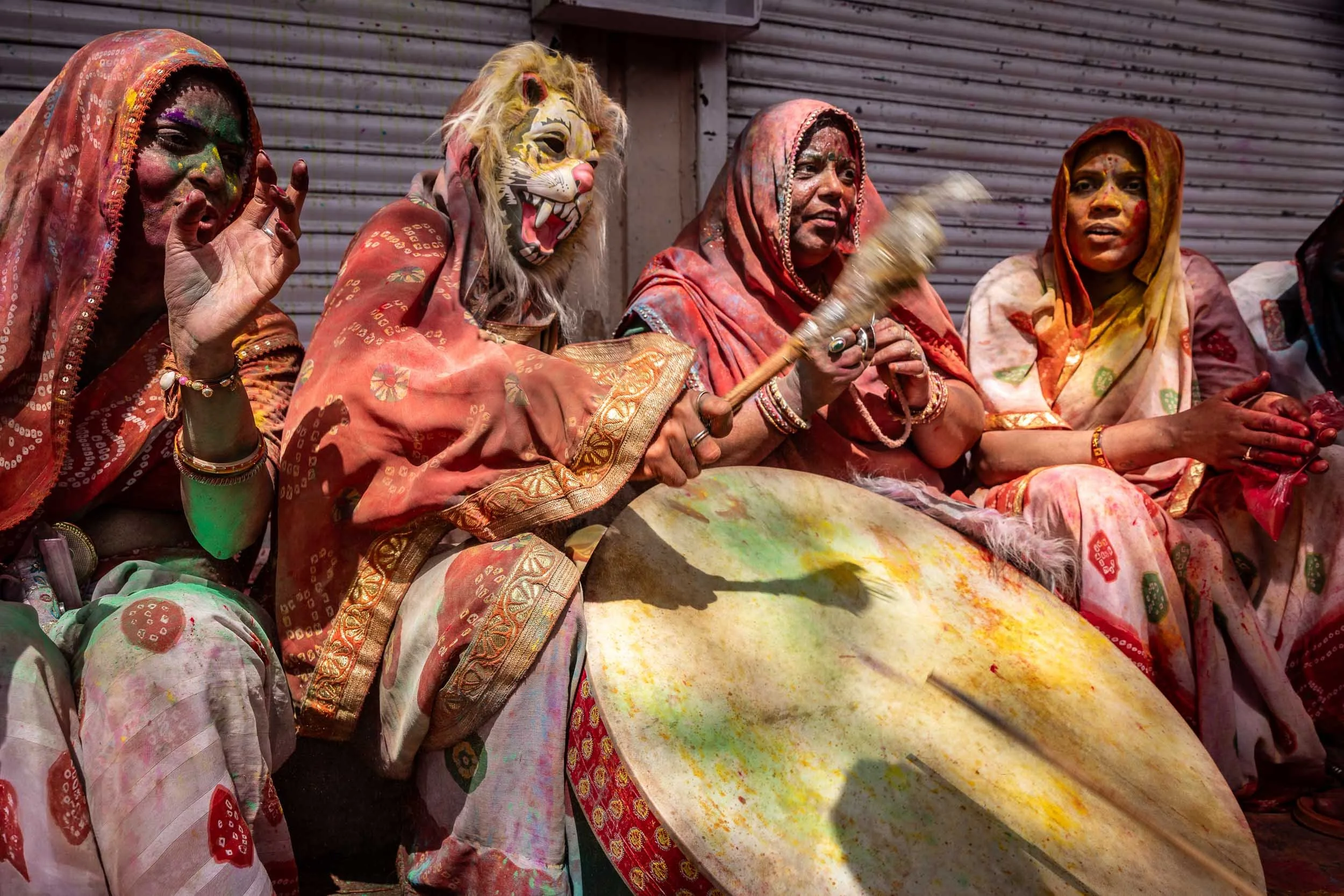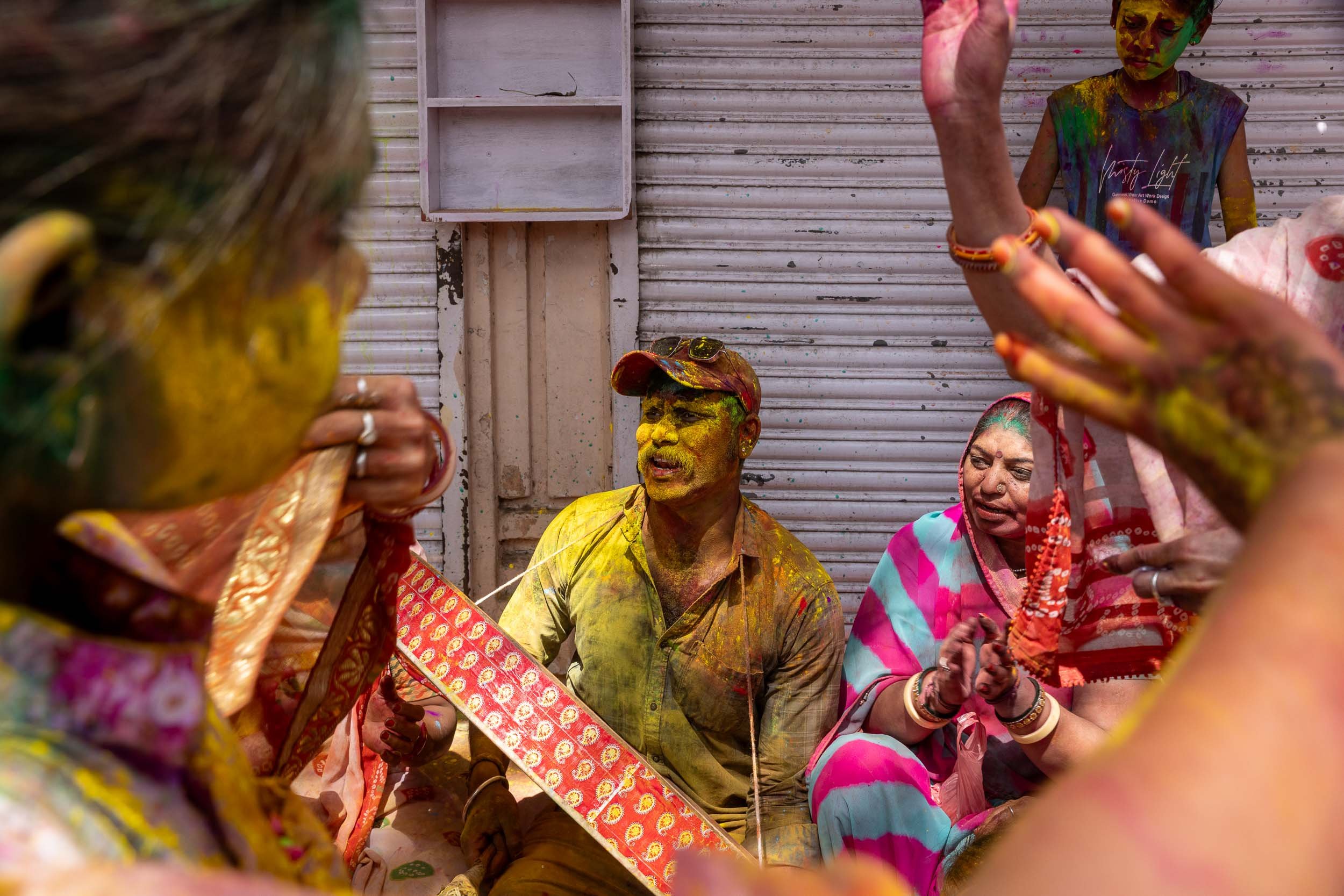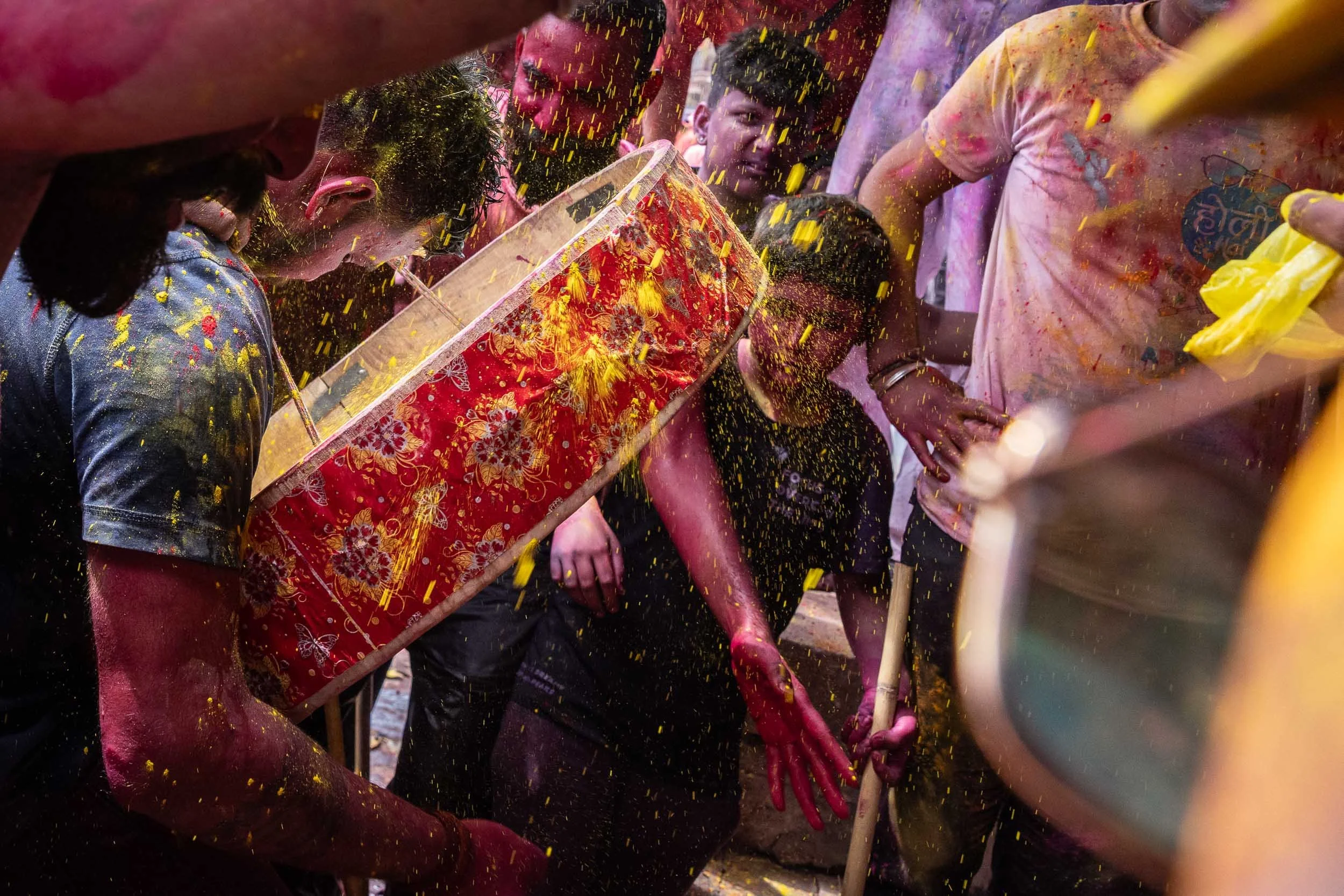Fire and Colour
Celebrating Holika and Holi in Jodhpur
Jodhpur was bathed in an aura of anticipation. In the early morning streets of the Sri Ganganagar neighbourhood, the inhabitants were going about their business with a quiet but purposeful energy. Holi was near, and preparations for Holika Dahan - the ritual burning of a symbolic pyre on the eve of Holi - were already shaping the day.
At a street corner, women in bright saris and family groups were selling offerings for the traditional fires to be lit that evening: discs of dried dung, twisted branches—likely from neem or peepal trees, both sacred in Hindu tradition—and sheafs of fresh green barley. Barley is traditionally offered into the Holika fire—a symbol of fertility, growth, and the hope of a good harvest.
Lady selling discs of dung for Holika Dahan in the Sri Ganganagar district of Jodhpur, India
Lady selling dung and green barley for Holika Dahan in the Sri Ganganagar district of Jodhpur, India
A young girl who had been left in charge of the family ‘stall’ of Holika Dahan essentials by her father
A family in prime position on a street corner to sell everything you could need for Holika Dahan
Stalls selling gulal—the vivid powdered pigment that defines Holi— their offerings spread across cloth like a fallen rainbow dotted the streets. Heaps of pink, yellow, green, blue, orange and red piled high, catching the light. The vendors were becoming dusted in stray colour as they filled bags for customers. You could feel a shift beginning—an ordinary day blending into something more.
A young gulal stall holder
Gulal stall holders
That evening, our group had been invited to join a small Holika Dahan celebration - not a grand public gathering, but something intimate and rooted in the neighbourhood close to our hotel. It was to be a late event as this festival always falls on the full moon of Phalguna, marking the end of winter and the promise of spring. In Hindu tradition, the full moon is charged with significance, believed to amplify spiritual energy. A group of men carrying large drums arrived at our hotel to start the celebrations, the beat rising and falling like an unsteady pulse.
The drumming and shouts of the men echoed in the street as we processed to a small open space where several lanes converged, to find a pyre had been carefully assembled. It was a modest pile of branches, but its presence filled the space. There was drumming and shouting while a priest recited blessings and prepared the flames.
Blessings being carried out before the fire is lit for Holika Dahan
Flames were lit. Offerings were passed forward including tender sheafs of barley. One by one, they were fed into the fire. The barley curled and blackened in the heat, a prayer to the land and a hope for the coming harvest. Smudges of colour were smeared on foreheads as a mark of greeting. The flames took hold and rose; a long central branch was pulled round and round, rotating the fire within a circle marked on the ground. As the fire died, men, women and children processed clockwise around the embers.
The Holika Dahan fire being lit
The branches in the Holika Dahan fire being spun - sparks flew and I pressed myself as far as I could into the wall behind me
We were participating in something timeless. There was no fanfare, no large spectacle. Just tradition and rhythm, firelight and the full moon.
And then came morning.
We dressed in white kurtas and trousers and, before heading into the Jodhpur streets, smeared each other’s faces with gulal. All very civilised; that didn’t last. As we walked out to our minibus, we were targeted by children who gleefully added to our colour palette as well as taking a few pot shots at with water pistols. It set the scene for what was to come.
Holi is joyful chaos - the streets alive with laughter, music, and colour, and awash with water in places. And we stepped into the middle of it. There wasn’t so much of the powder being thrown about, as I had imagined would be the way, but a respectful smearing of each cheek with pink, green, blue or yellow and the greeting “Happy Holi!”. That changed as the day wore on and libations were taken; the energy and noise rose over the hours. The respect was still there but more copious amounts of powder were applied to face and head. I’m not particularly tall so had the ignominy of the powder being rubbed into my hair too. As my face went from red to green to yellow. My white kurta became Joseph’s technicolour dream coat.
Dancing in the street as the Holi celebrations begin
No one is allowed to go unscathed when it comes to the colourful powder that is synonymous with Holi
Men, and some young women, cruised the streets on their scooters being covered in powder as they rode - the streets were so busy, they couldn’t go fast enough to escape
Time for a breather
I think these young lads covered themselves with as much powder as they got on anyone else
Waste not, want not
Holi is a festival for all ages
Boys and water - need I say more?
What struck me wasn’t just the colour and noise - although that was everywhere - but the choreography of closeness and distance. I was very aware as we moved through the streets that the men and women, for the most part, were celebrating in separately: sometimes streets apart, sometimes metres apart; an intangible boundary between them.
In one street, women in red saris danced in two long lines; towards each other and then apart, a sort of Rajasthani version of the hokey cokey. With each pass, they tried to pull out a woman from the opposite line, laughter erupting as they succeeded.
Red was the predominant colour worn by the women. In the cacophony of Holi’s colours, red holds its own: the colour of love, of fertility, of sacred rites and Shakti - divine feminine energy. It marks marriage, power, and beginnings. Each sari was a stitch in a tapestry of celebration and strength.
Women coming together to celebrate Holi - a river of red saris and the embodiment of feminine energy
This was such fun to watch - the women were having a great time and there was much laughter as they surged forwards and backwards
Across the road, another group sat on stone steps, banging out rhythms on a drum and singing, the rhythmic beat guiding the celebrations. The men, gathered nearby were louder, looser, fuelled by rum; a pulsating mass of sound, sweat and celebration. Yet the boundary between them was porous. A man would join the women with a drum; powder and laughter would drift across the divide. It didn’t feel quite a full separation, but a rhythm established over aeons - each group danced to the same music, just in their own time and space.
Banging out rhythms on a daf drum. There were quite a few lion masks being worn but I don’t know whether there was a specific significance or whether it was just a trend
The women are joined by a man with a drum
By this time the celebrations were reaching a crescendo and the groups of men were pulsating masses of sound, sweat and celebration
Holi, like all festivals of renewal, is about shedding the old, stepping into light, and celebrating what it means to be human - messy, joyful, colourful, connected.
A couple of the tour leaders also share their work online — Shivam Pandey of Kolkata Photo Tours and Neale James of The Photowalk Podcast. They’re teaming up again in March 2026 to put on a Photowalk adventure to Kolkata and Varanasi.
This piece is part of my travel and photography blog, where I share stories of people, places, and festivals around the world. You can also find my newsletter on Substack, if you prefer to read on that platform.

